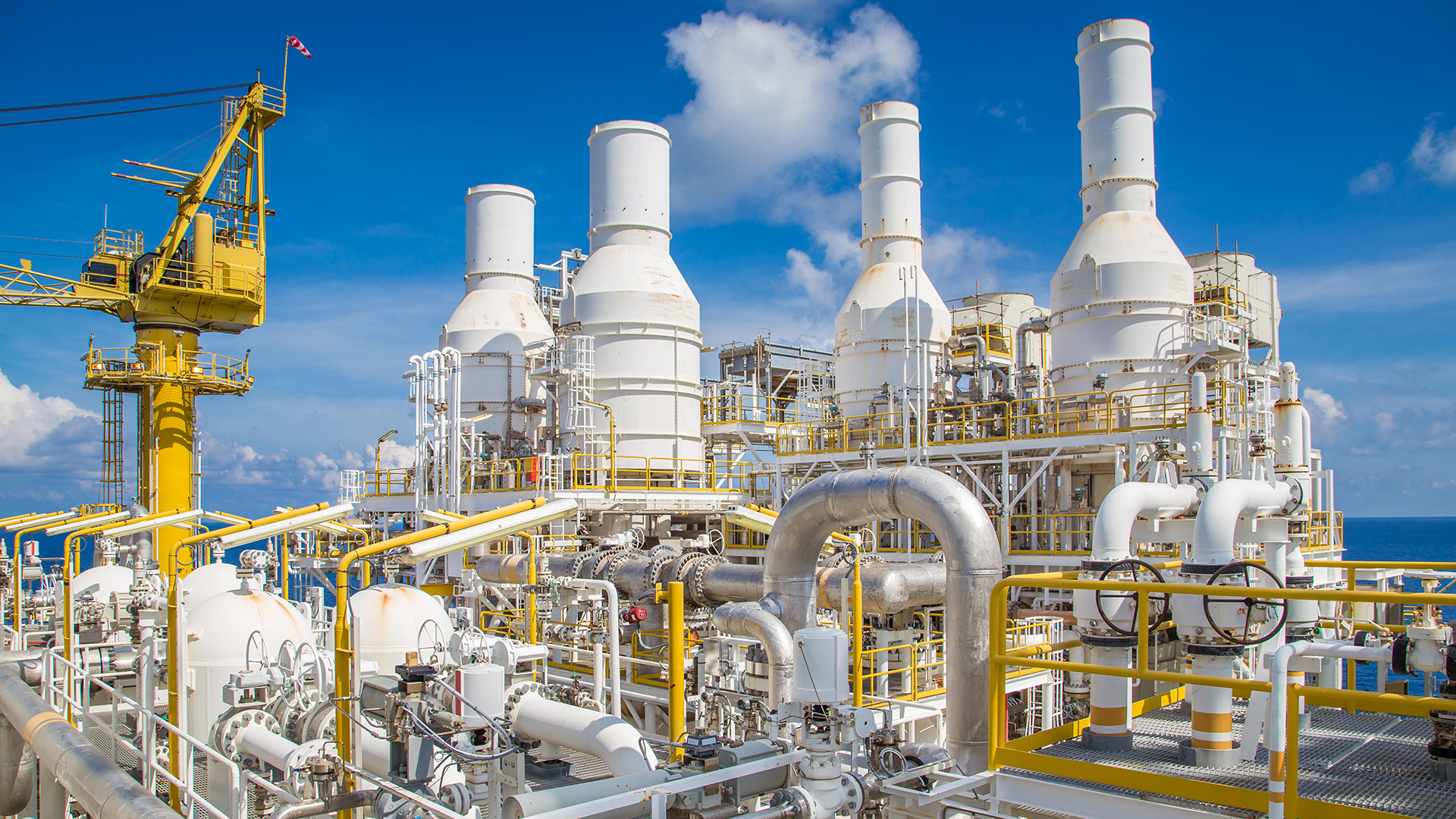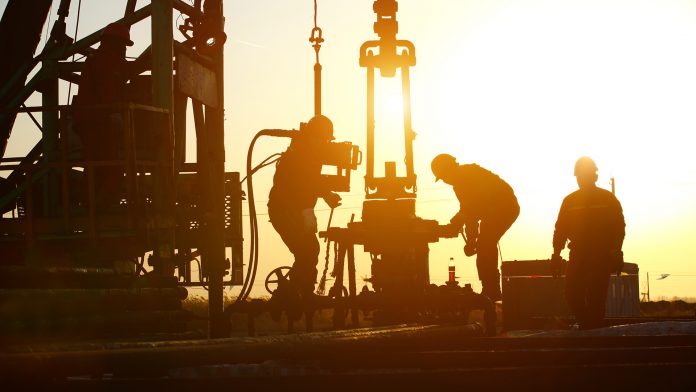The Innovation News Network provide insight into helium-rich gas distributions and explores the key environmental parameters which shape them.
Helium-rich gas reserves are an essential resource with a wide range of potential uses. Therefore, understanding the characteristics and controlling factors associated with their distribution is critical to ensure the effective management of these resources.
What are helium-rich gas reserves?
Helium-rich gas reserves are a valuable resource that contains concentrations of helium higher than what is typically found in nature. They can be identified and explored through several techniques, such as seismic surveys and drilling explorations. Gas reserves are classified based on their concentration levels, with those containing more than 0.1% helium being considered ‘helium-rich’.
The exploration of helium-rich gas reservoirs requires various specialised methods due to the unique composition of the resource. Since it is not visible to the naked eye, seismic imaging is used to identify potential sites for further investigation. Once a promising area has been located, multiple wells may need to be drilled to sample its content and measure the flow pressure of the reservoir system. To ensure accurate readings, high-precision tools must often be employed during this process.
In addition, real-time data from remote sensing technology can also help provide detailed information about characteristics such as temperature or porosity within an underground reserve formation – ultimately aiding in determining whether any significant amount of helium exists beneath the surface. With these technologies at hand, explorers have greater insight into where they should focus their efforts when looking for viable sources of this precious commodity.
Geological environments and sources of helium
Helium is a unique element as it is one of the few elements that exist in nature without being chemically bound to other substances. Its global reserves are, therefore, largely dependent on its geological environment, and understanding these environments can shed light on possible sources of helium-rich gas reserves. To put it another way, knowing where helium is found gives insight into how it might be discovered elsewhere.

The abundance of helium varies greatly depending on its source; for example, coal beds tend to have much lower concentrations than those found in sedimentary rocks or magmas. The type and amount of rock present also affect the amounts discovered – igneous rocks usually contain more helium than sedimentary ones due to their higher temperatures during formation. Coal seams may appear promising at first glance but often contain significantly less helium than expected because they formed before significant quantities had been released from the Earth’s mantle.
In addition to geological factors influencing the discovery of helium-rich gas reserves, certain hydrochemical processes also play a role in determining availability. For instance, groundwater flowing through aquifers will pick up some trace amounts of dissolved helium along its journey to the surface, making them potential sites for further investigation. In short, research into both the source rocks and hydrochemical processes associated with the formation and accumulation of gas deposits could lead to new discoveries of large reservoirs in previously unknown or unexpected locations.
Classification of helium-rich gas reserves
Helium-rich gas reserves are classified according to their amount of helium content, global distribution and commercial exploitation. Globally, there are four categories of helium-rich gas reserves:
- Natural accumulations;
- Produced accumulations;
- Associated accumulations; and
- Artificially created reserves.
Natural accumulations of helium-rich gas occur in underground reservoirs with a greater-than-normal concentration of this element due to geological conditions such as subsurface temperature, pressure and permeability. These types of deposits account for around 70% of the total global helium reserve base. Produced accumulations refer to those that come from oil or gas production processes which involve either partial recovery or complete extraction depending on the reservoir characteristics. Associated accumulations are found when gases other than hydrocarbons like nitrogen (N2), carbon dioxide (CO2) or hydrogen sulphide (H2S) exist along with high concentrations of helium, generally at depths between 1 km and 7 km below ground level. Finally, artificially created reserves refer to those that are generated through industrial activities such as nuclear reactors or chemical processing plants.
The classification system used for these different types of helium-rich gas reserves is important in understanding how they can be efficiently explored and extracted to meet current and future demands for this rare nonrenewable resource. Furthermore, the knowledge acquired from studying the various classifications helps inform decisions about how best to manage existing resources while also exploring new sources worldwide.

Distribution characteristics of helium-rich gas reserves
Helium-rich gas reserves are an enigmatic source of energy, yet the distribution characteristics and the controlling factors behind them remain largely unknown. To understand their nature, it is necessary to investigate how these resources are distributed in different geological environments, as well as what exploitation trends exist. What can be discovered by delving into this subject?
To start off, helium-rich gas reserves tend to form in a discontinuous manner; they occur mainly within tight sedimentary rocks or deeper fracture systems at depths between 3 km and 7 km below ground level. Such conditions require specific geological settings for helium to accumulate and become concentrated enough so that its presence is identifiable. In addition to being found within certain settings, some regions have been observed with higher concentrations than others due to differences in tectonic activity and levels of magmatic intrusion over time. This suggests that structural elements play a role in determining the spatial pattern of occurrences for such resources.
Furthermore, research has shown a correlation between the occurrence of helium-rich gas reservoirs with other natural resources such as oil and coal beds. This indicates that exploration strategies should consider taking advantage of existing knowledge about conventional hydrocarbon accumulations when searching for similar types of deposits containing high concentrations of helium. Additionally, geophysical techniques have proven useful in helping identify areas where significant amounts of helium might be located underground since their application can detect changes not visible on the surface but still present deep down beneath the Earth’s layers.

Understanding the distribution characteristics and controlling factors associated with helium-rich gas reserves requires insight into various aspects, including geology, tectonics, and environmental variables – all while considering related traditional resource formations too. Examining exploitable sources using appropriate methods facilitates locating these valuable commodities more efficiently, thus allowing us to utilise them effectively for modern applications like medical imaging or aerospace technologies.
Global distribution pattern of helium-rich gas reserves
Most known deposits are located in areas where tectonic forces have created high heat and pressure gradients conducive to helium formation. For example, North America has some large reservoirs of deep gas with higher concentrations of helium than other regions due to its geologic history. Many African countries also possess significant volumes of natural gas containing elevated levels of this noble gas; this phenomenon is generally attributed to volcanic activity that occurred millions of years ago. Helium-rich gases can be found in South American countries as well, but the volume tends to be much lower compared with other continents.
In addition to geological factors influencing the location and abundance of helium-rich reserves, human activities such as oil extraction and mineral mining may contribute to their emergence or depletion over time. Through hydrocarbon production processes like fracking, previously unavailable sources of shale gas may become accessible for exploration and exploitation. Conversely, irresponsible drilling practices and inadequate safety protocols could lead to dangerous leaks of naturally occurring gases into the environment. Thus, it is essential for industry stakeholders to maintain a balanced approach towards preserving these valuable resources while ensuring public health and safety standards are met at all times.
Given its importance for various industrial applications, understanding how different factors shape the spatial distribution pattern of helium-rich reserves on Earth merits further investigation from both scientific and policy perspectives. The results obtained from such research efforts will enable us better anticipate changes in supply dynamics over time and make informed decisions about how best to manage these finite resources going forward.
Factors influencing reservoir distribution
The distribution of helium-rich gas reserves is a global pattern that has been shaped over time by many complex factors. These influencing factors can be broken down into two main categories: geological and economic. From exploration techniques to evaluation methods, these variables have created an intricate web of conditions that determine the location, size and extent of each reserve.
Each variable plays its own role in affecting the overall reservoir distribution, from lithology and structural settings which control the presence or absence of certain reservoirs to exploration techniques used to locate them in the first place. Every factor contributes to what we see today as a global mosaic of diverse resources. The interplay between economics and geology means careful consideration must be taken when assessing any given area’s potential for new discoveries.

From seismic survey data to drill core analysis, humans have developed ways to understand their surroundings better, allowing us to make more informed decisions about our planet’s resources. This knowledge has been instrumental in unlocking access to previously unavailable energy sources like helium-rich gas reserves. Ultimately, it is only through understanding how different elements interact with one another that we can continue uncovering new possibilities within our environment – some quite literally out of this world!
Controlling factors of helium-rich gas reserves
Helium-rich gas reserves are typically found in reservoirs of natural gas, and the controlling factors for their distribution can be divided into two categories: reservoir characteristics and production technology.
The primary factor determining the distribution of helium-rich gas is the geological properties of a given reservoir. The presence of such gases relies on specific conditions such as tectonic activity, temperature and pressure regimes, sedimentary rocks, and other geologic features. In addition to these site-specific attributes, exploration techniques must also be employed to discover potential locations with high levels of helium deposits. Techniques such as seismic surveys or well-testing methods allow scientists to assess the subsurface composition and determine whether an area contains potentially exploitable concentrations of helium-rich gas.
Once a reserve has been identified, production technology will play a large role in determining how much helium can actually be extracted from its source. Different technologies may have different efficacy when it comes to extracting certain elements present within the deposit; therefore, choosing an appropriate extraction method is essential. Not only this, but economic considerations must also be taken into account when deciding which technique should be used since some methods may produce more cost-effective results than others.
Both reservoir characteristics and production technology heavily impact the amount of usable helium that can feasibly be obtained from any particular reserve due to their influence over discovery processes as well as extraction efficiency.
What exploration techniques are utilised?
Exploration for helium-rich gas reserves requires an understanding of the most effective techniques and methods. With a reliable knowledge base, it is possible to accurately predict the locations of potential reservoirs as well as identify other geological or geophysical characteristics. By utilising specialised exploration methods, researchers can detect the presence of helium-rich deposits to exploit them economically.
Helium-rich exploration typically involves extensive data collection and analysis, such as seismic surveys, gravity measurements, core samples and soil analyses, among others. Seismic surveys are especially important for determining structures that may contain reservoirs of helium-rich gas. Gravity measurements allow researchers to estimate subsurface density contrasts, which can help indicate areas with a greater likelihood of containing high concentrations of these gases. Coring is another method used by scientists to determine the total amount of helium present in a reserve while also providing further insights into its structure and properties. Soil sampling enables researchers to gain information on potential migration paths between different formations, thus allowing better estimates of any given reserve’s total size and shape.
The right combination of exploration methods must be utilised when searching for new sources of helium-rich gas reserves due to their natural scarcity. A comprehensive approach encompassing all relevant aspects provides the best chances of discovering new resources and exploiting them safely while minimising both economic costs and environmental impacts associated with extraction activities.

Evaluation methods for helium-rich gas reserves
Evaluation of helium-rich gas reserves is a complex process that combines exploration, exploitation economics and production technology. The primary objective of reserve evaluation is to determine the economic resources in a given area for commercial extraction. To this end, industry professionals use several methods to assess the potential value of any helium-rich source. These include:
- Exploration techniques: Seismic surveys, gravity mapping and core sampling can be used to identify pockets of helium-bearing rock formations below the surface;
- Exploitation economics: The cost associated with developing a field must be weighed against expected returns from production or sale in order to make an informed investment decision;
- Production technology: When evaluating potential sources of helium-rich gas, it is important to consider the technical feasibility of extracting the resource using existing technology;
- Reserve estimates: Industry experts use data collected through exploration and analysis to estimate total recoverable reserves and future production scenarios; and
- Risk management planning: A comprehensive risk assessment should also be conducted prior to investing in a project based on its estimated reserves, as unforeseen risks may adversely affect profitability over time.
For companies involved in exploring for and exploiting helium-rich gas reserves to maximise their return on investment, it is essential that they have access to reliable information regarding current market conditions and technological advancements within their sector. An effective evaluation strategy will take into account all available data related to both geological characteristics as well as economic considerations when making decisions about where best to focus their efforts towards achieving success in this highly competitive industry.
Production technology for helium-rich gas reserves
Depending on the nature of the resource, various techniques may be employed to optimise profitability and ensure a successful extraction process. The primary methods used are drilling or fracking, depending on the geology of the area and other factors. In addition to traditional methods, specialised technologies such as directional drilling can also be utilised to maximise efficiency.
Drilling involves sinking a well into the ground to access subterranean gas reserves. This method typically requires high capital expenditure due to its reliance on heavy machinery and expensive equipment. Fracking utilises pressurised liquids injected underground to fracture rocks and releases natural gas previously inaccessible or uneconomical to extract. It is significantly less expensive than drilling but has faced criticism from environmentalists due to potential contamination risks associated with it.
Regardless of which technique is selected for exploiting helium-rich gas reserves, careful planning must take place beforehand to identify optimal locations for development and determine appropriate production rates given economic constraints. Additionally, environmental regulations must always be considered during any type of exploration activity to minimise the impact on local ecosystems and inhabitants. With proper risk management measures in place, extracting helium-rich gas reserves can become increasingly profitable while maintaining responsible stewardship over natural resources.

Economics and profitability of exploitation
The exploitation of helium-rich gas reserves is an economically viable prospect. A cost-benefit analysis must be done to assess the economic feasibility and profitability of such a project. Factors that are considered include resource utilisation, investment costs and returns, financial risks, and potential yields from selling commodities extracted from the reserve.
The ultimate goal when exploiting such resources is to ensure that the resource can provide a positive financial return on investment over its lifespan. This requires careful assessment to determine if it will be profitable enough for exploitation or not. Resources need to generate sufficient profit margins to make them economically feasible investments with reasonable risk levels involved.
In making decisions about whether or not helium-rich gases should be exploited, all of these factors must be considered carefully before proceeding. An accurate estimation of costs needs to be made along with projected returns which help investors decide if they want to invest in the project or not. It is important that the assumptions used for this calculation are realistic so that investors understand what kind of profits they can expect based on their initial capital outlay. By doing this analysis accurately, decision-makers can better gauge whether investing in helium-rich gas reserves would yield a good financial return or not.
Safety measures in exploitation
Precaution and planning are paramount when it comes to the exploitation of helium-rich gas reserves. Safety measures must be taken at every step to mitigate any potential risks or accidents that may occur during operations. In this section, we will discuss some of the most important safety considerations for exploiting these resources safely.
To begin with, proper risk management is essential for ensuring the safe exploitation of helium-rich gas reserves. Risk assessments should be conducted before any project commences so that all possible hazards can be identified and mitigated in advance. Additionally, strict accident prevention protocols should be implemented to minimise the chances of an incident occurring onsite. Furthermore, hazardous materials such as flammable gases or liquids should always be stored securely away from other equipment to prevent any contact between them.
The importance of following set safety procedures cannot be overstated; they provide a framework within which operators can work efficiently and reduce their exposure to potential harm. Adequate training should also be provided to all personnel involved in the process, so everyone knows what precautions must be taken when working around potentially dangerous substances or processes. Finally, regular maintenance checks should also occur on all machinery used onsite – this ensures everything is running correctly and minimises the chances of failure or breakdowns leading to accidents or injuries.
Environmental impacts of exploitation
Exploiting helium-rich gas reserves has a significant environmental impact, which must be considered when assessing this resource’s sustainability and viability. The extraction process can lead to air and water pollution as well as soil erosion or depletion due to mining activities. In addition, over-exploitation may result in loss of biodiversity and habitat destruction.
One way that governments can minimise negative environmental impacts is by setting regulations for exploration, production and transport operations. This includes restrictions on flaring and venting gases, reducing emissions from machinery and ensuring proper waste disposal methods are employed. Furthermore, companies should also seek ways to reduce their energy consumption during the extraction process. For instance, they could invest in renewable sources such as wind or solar power instead of relying solely on fossil fuels like natural gas or diesel fuel.

Finally, it is important for both public authorities and private operators to take into consideration local ecosystems when designing plans for exploiting helium-rich gas reserves. This means considering factors such as land use patterns and potential impacts on existing species populations before beginning any work related to drilling or development projects. It is essential for all stakeholders involved in these activities to understand the long-term effects their actions may have on the environment so that appropriate measures can be taken to mitigate them.
The future market outlook
One trend which appears likely to continue into the foreseeable future is an increased emphasis on refining existing technologies rather than developing completely new ones. This will enable more efficient extraction processes while minimising damage to ecosystems, making production more cost-effective with reduced emissions. To this end, research efforts should be focused on optimising current technology and improving safety protocols to ensure sustainable production in the long term.
Another promising area of development is enhanced data processing capabilities which can improve accuracy during evaluations before drilling operations. Artificial Intelligence (AI)-based applications could also be employed within this context, allowing for better resource management through improved predictive modelling of resources within certain areas and providing timely information about optimum conditions for successful exploration activities. Such advancements would help reduce risks associated with exploratory ventures by enabling operators to make informed decisions when evaluating potential sources of helium-rich gas reserves based on reliable data sets.
As technological advances continue at rapid rates, the future exploitation of helium-rich gas reserves looks set to benefit from greater understanding and control over available resources at lower environmental costs than ever before. Alongside improvements in data analysis and refinement of existing technologies, further developments may arise that allow us even closer access towards unlocking these precious natural resources without compromising our environment or economic viability moving forward.

The most cost-efficient way to extract these resources is by understanding the characteristics and controlling factors associated with their distribution, as well as the potential risks associated with extraction. Geological changes have an immense impact on the availability of helium-rich gas reserves; thus, it is essential for researchers to continue studying how geology influences the formation and development of these resources. Additionally, long-term environmental implications must be carefully considered when developing strategies for exploiting this natural resource.
Due to its versatile nature, helium-rich gas can be used in numerous applications, from cryogenics to aerospace technology – making it an incredibly valuable commodity going into the future. As such, research should focus not only on finding ways of extracting this powerful energy source but also on discovering new uses for it, which will revolutionise our world like never before – a prospect so exciting it’s almost electrifying! With proper regulation and investment in research and development regarding helium-rich gas reserves, humankind can unlock unimaginable possibilities that would otherwise remain hidden beneath the surface.








